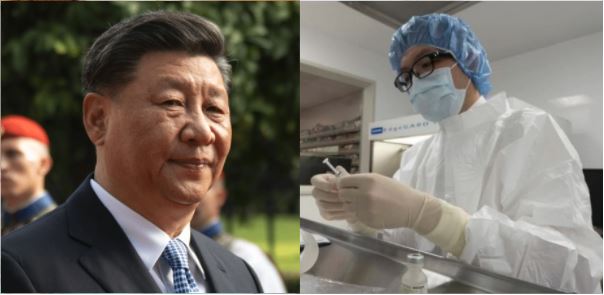In the wake of concerns about whether the COVID-19 virus originated in a laboratory in Wuhan, China has implemented a new biosecurity law to strengthen the legal framework for the establishment and safe operation of more bio labs in the country. The novel coronavirus first appeared in China’s central Wuhan city in December 2019 and quickly spread across the world, unsettling people’s lives.
The Wuhan Virus emerged from Wuhan, specifically from a biotechnology lab. The outbreak has not only unsettled but has disrupted millions of lives across the globe. More than 2 million people have died and counting. But the CCP remains unperturbed. It only knows how to further its agenda and now it is opening up similar labs across China, the kind which bestowed the world with the Coronavirus
China will continue to develop and authorise more labs specialising in advanced pathogenic microbiology in a scrupulous and scientific manner under the new Biosecurity Law, according to Deputy Minister of Science and Technology Xiang Libin.
According to the state-run Global Times, China will conduct significant scientific research to improve its biosecurity science and technical capability against potential infectious diseases.
According to the publication, the ministry has reviewed and authorised the construction of three biosafety level-4 labs (P4 labs) and 88 biosafety level-3 labs (P3 labs) in China. A biosafety level (BSL), also known as a pathogen/protection level, is a collection of biocontainment measures that must be followed in order to isolate dangerous biological agents in a laboratory setting.
In April of last year, Bai Chunli, president of the Chinese Academy of Sciences, stated that China had two P4 labs in operation, in addition to 81 P3 labs that had been approved for construction.
According to the Global Times, the United States has 12 P4 and 1,500 P3 laboratories. The US has reported that coronavirus originated at the Wuhan Institute of Virology (WIV), a P-4 bio lab. China has categorically refuted the accusation. Last month, a team of WHO experts investigating the coronavirus’s origins reported that “all possibilities” remained available, including the possibility that COVID-19 originated in a bio lab of China.
Dr Tedros Adhanom Ghebreyesus, Director-General of the World Health Organization (WHO), said on March 30 that “as far as the WHO is concerned, all theories remain on the table” after receiving the report of the international experts’ team that visited Wuhan.
He said, “This report is a very important beginning, but it is not the end. We have not yet found the source of the virus, and we must continue to follow the science and leave no stone unturned as we do.”
Tedros also stated that the team has determined that the leak from the WIV, as claimed by former US President Donald Trump, is the “least likely theory,” but that it needs further investigation.
“The team also visited several laboratories in Wuhan and considered the possibility that the virus entered the human population as a result of a laboratory incident. However, I do not believe that this assessment was extensive enough. Further data and studies will be needed to reach more robust conclusions,” Tedros said.
The WHO chief further added, “Although the team has concluded that a laboratory leak is the least likely hypothesis, this requires further investigation, potentially with additional missions involving specialist experts, which I am ready to deploy.”
The law on biosafety, according to Yang Zhanqiu, deputy director of Wuhan University’s pathogen biology department, is a timely step for China to detail the construction and management of biosafety labs and provide a legal shield for research projects on biosafety, including infectious diseases, to be carried out scrupulously and professionally.
The CCP’s latest biosecurity laws are aimed to protect bio labs rather than people. The infamous Wuhan lab had already infected the world with the pandemic and now with reports of hundreds more same styled labs incoming, it could soon turn out to be an ever major and bigger disaster.
